Like many other consonant-rich cities and towns in Poland, non-Polish speakers browsing the map of Central Europe often query "how to pronounce 'Szczecin'?"
It goes like this: "SHCHET-cheen" (Go on, you got it!!).
However, Szczecin has been known by a handful of other names in its 1100+ year history. Most notably, Germany and Sweden still refer to this pitstop as 'Stettin,' which we're sure most English-speakers would prefer today. The variations of placenames reflect the importance that this strategically-placed delta off the Baltic coast held for the key powers in Central Europe. Furthermore, it may have begun and ended as a Slavic centre, but between its first mention in the 8th century and the end of WWII, Szczecin/Stettin would change hands numerous times. Put simply: there's a reason why, today, Szczecin is just 14km from the border with Germany!
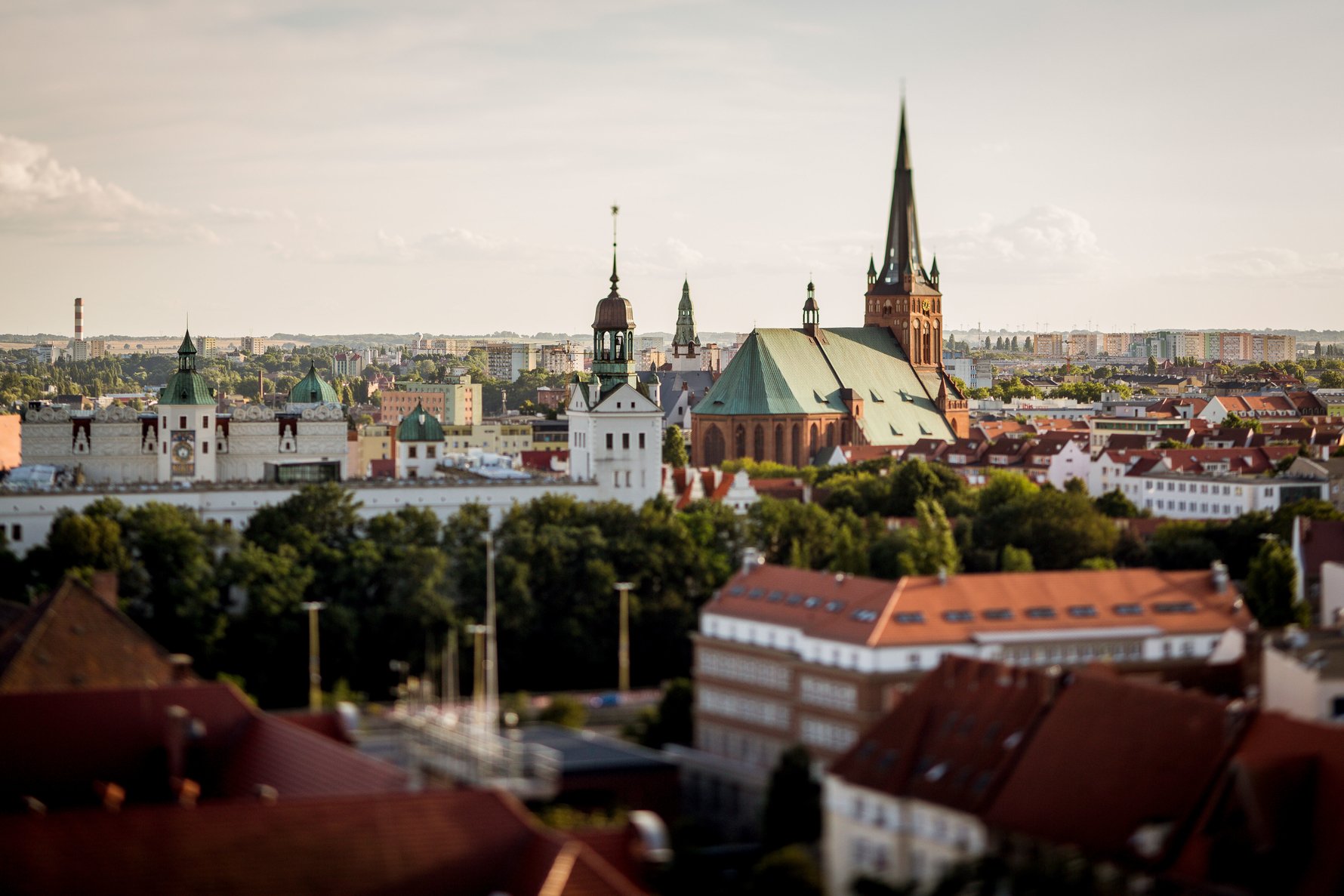
How Old Is Szczecin/Stettin?
Visitors heading to the city's 14th century Ducal Castle have the opportunity to peer back even further in time on the bottom floor, where a glass floor reveals the ruins of a stronghold that once stood on its hill location. This 8th century structure, the earliest known site in Szczecin, was constructed by Lechtic Pomeranians before the area had been christianised. In fact, the etymology of the name Szczecin' is most likely a reference to this landmark, as 'szczyt' in Old Slavic means 'shield' but also 'hill peak'. Overlooking the inlet of the lagoon and the West Oder River that empties into the Baltic sea, this was clearly an ideal strategic location, particularly for defending against any unwelcome visitors from the north.
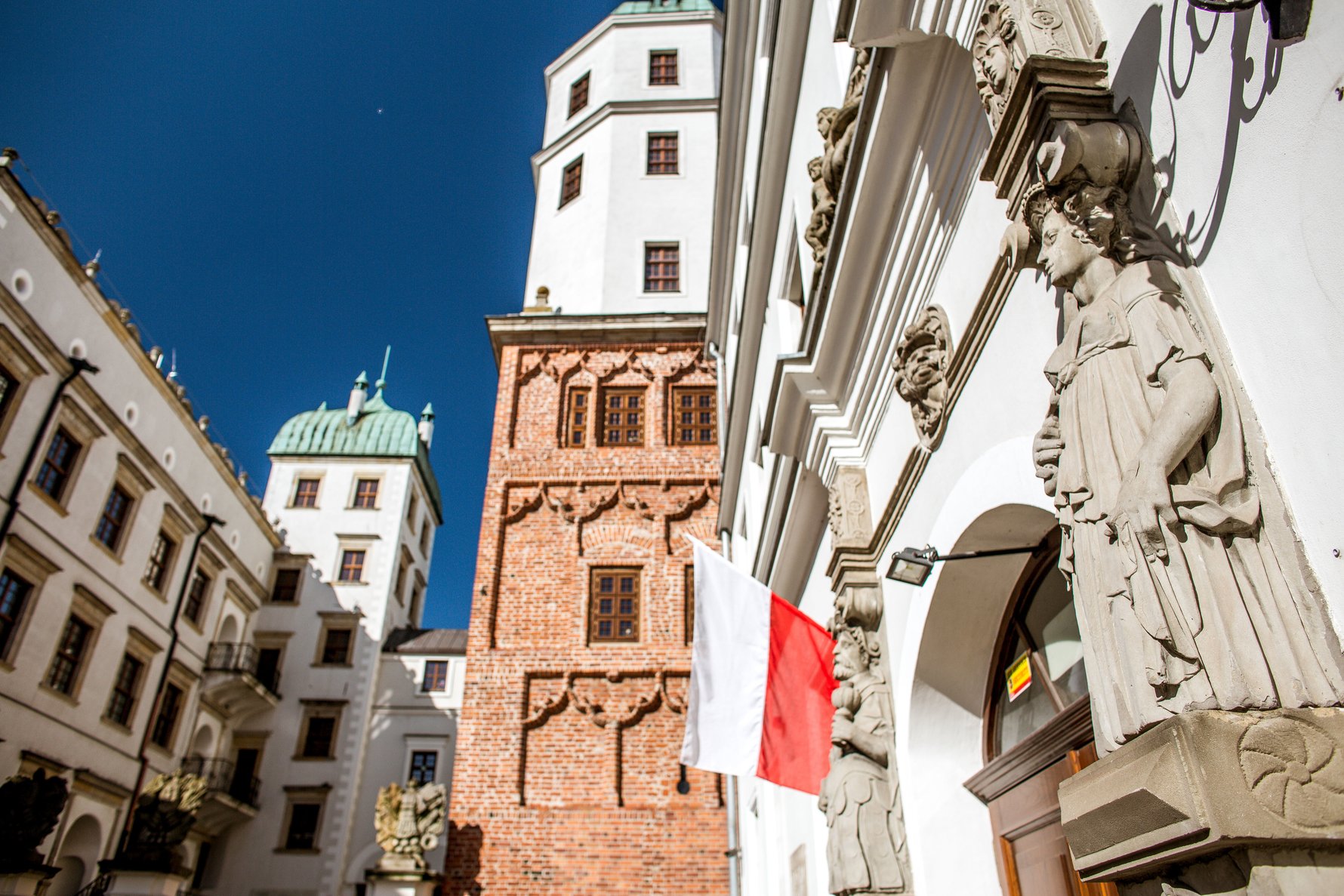
When did Szczecin become a part of Poland?
It wasn't long, however, until the newly-christened Polish State under Mieszko I, the first of the Piast rulers, expanded from their base region in today's Wielkopolska and took control of Szczecin in the 10th century. The locality would change hands frequently between the Poles and the German-fronted Holy Roman empire over the next two centuries. The area between Kolberg (now Kołobrzeg) and Szczecin was founded by Duke Wartislaw I in 1121 as the 'Duchy of Pomerania', and the dynasty known as the 'House Of Griffin' was born. With a population of somewhere between 5,000 and 9,000, Szczecin was now considered the major centre, if not the capital, of Pomerania. The Dukes of the House of Griffin would eventually commence the building of the Ducal Castle from 1346, and their coat-of-arms have represented Pomerania and Szczecin to this very day! The last Polish ruler for a significant amount of time would be Bolesław III Wrymouth, who conquered the Szczecin-end of Pomerania, oversaw its christianisation and managed to fend off Holy Roman crusaders for a short while. The first version of the Saints Peter and Paul Church was built in 1124. However, following Bolesław's death in 1138, Szczecin and Pomerania would be enveloped by the Germanic west and become known as Stettin.
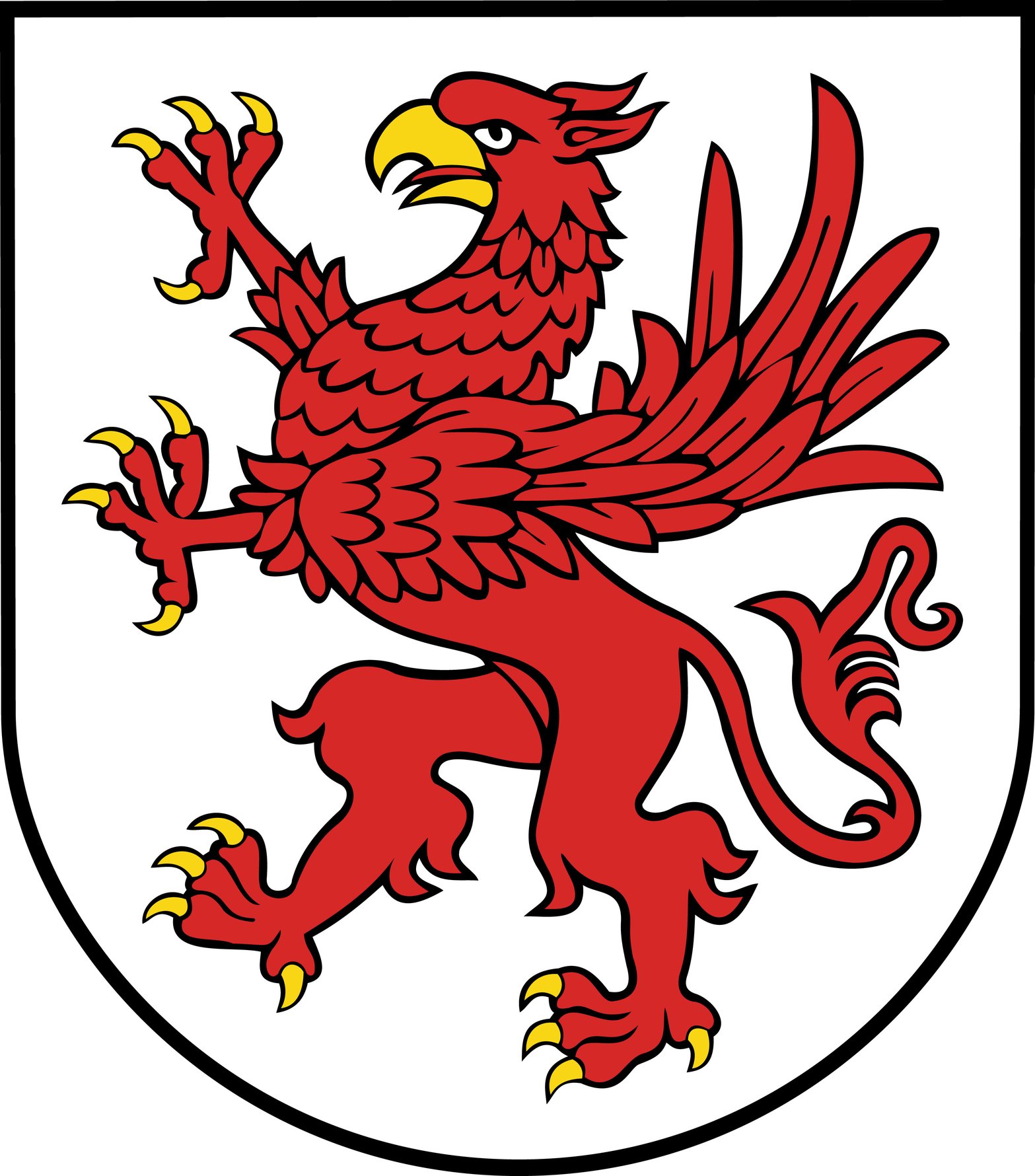
|
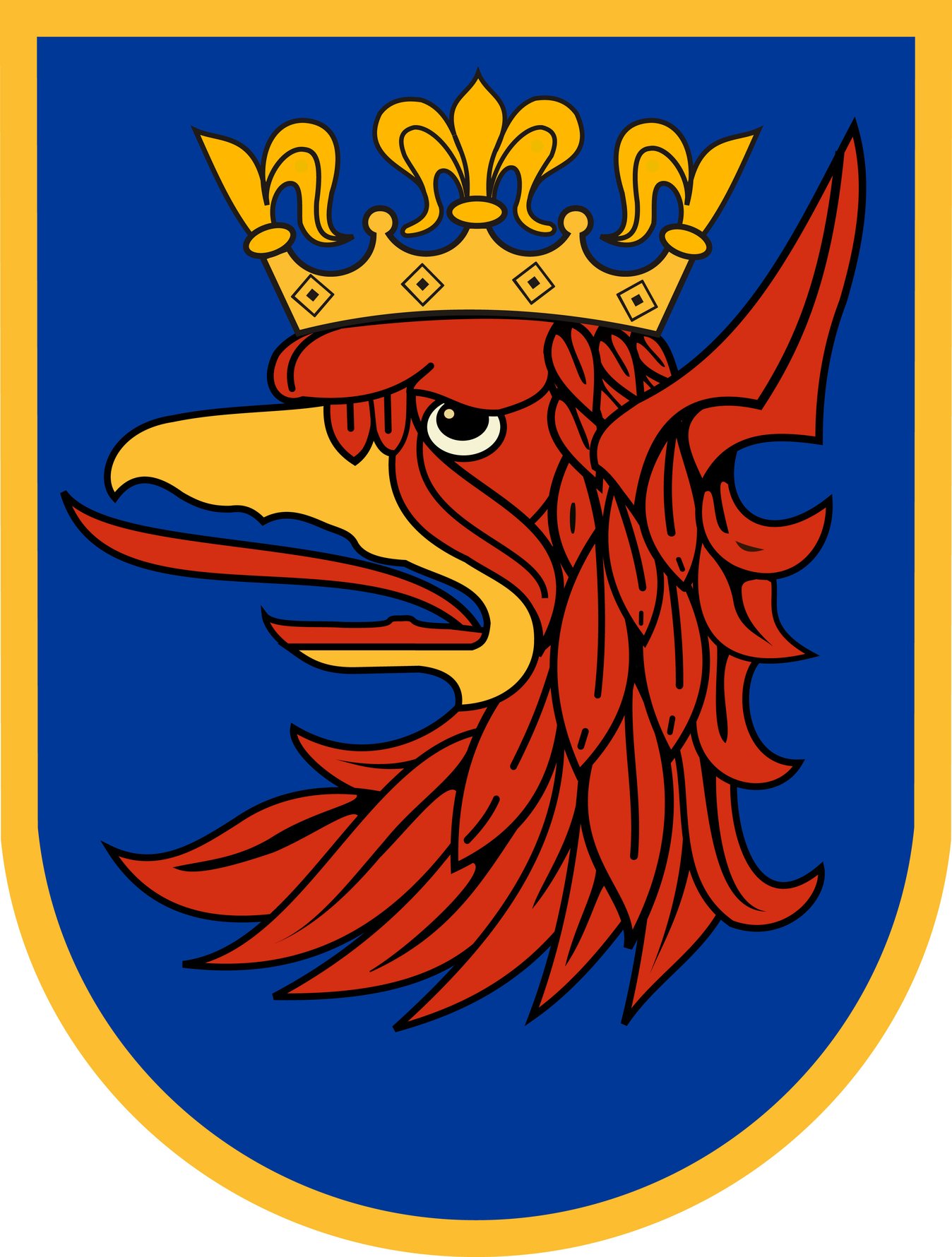
|
Danish and Holy Roman Rule of Szczecin/Stettin and Pomerania
Then began a dance-off between the Holy Roman Empire and Denmark, the latter of which periodically controlled Pomerania into the 13th century, and Stettin was completely destroyed and rebuilt in the process. Stettin appeared as 'Burstaborg' (meaning 'bristle mountain', a mistranslation of 'Szczecin' in Danish) in the Icelandic 'Saga of Cnut's Descendants', which glorified Dano-Icelandic conquests. After Denmark finally relented control in 1235, a period of high migration from various parts of the Holy Roman Empire, known in German as 'Ostsiedlung', saw the Stettin grow rapidly and its inclusion into the federation of Wendish towns (a precursor to the economic network known as the Hanseatic League) saw increased trade and prosperity. However, Slavs were being treated as second class citizens - forced to settle in separate neighbourhoods from their German counterparts, subjected to increased taxes and excluded from economic and artisan guilds. Jews, who had been granted settlement rights under the Magdeburg law, were restricted to living outside the town walls entirely.
Swedish Pomerania and Szczecin/Stettin during the Thirty Years War
In the late 16th century, as Szczecin came to rival other Holy Roman cities like Berlin and Leipzig in size, a new power began to emerge across the Baltic - the Swedish Empire. While the Polish-Swedish War ravaged the Baltic coast of the Polish-Lithuanian Commonwealth, Pomerania opted for a more-peaceful resolution. Bogusław XIV signed the Treaty of Stettin in 1630, agreeing to an alliance with (and occupation by) the Swedish Empire. This coincided with Sweden's entry into the 'Thirty Years War' which had seen the Catholic Holy Roman Empire in conflict with other Protestant nations since 1618. Bogusław XIV was also the last of the Griffin dukes, dying heirless in 1637. Following the end of the Thirty Years War in 1648, Sweden lost the eastern half of Pomerania to Brandenburg, which would eventually evolve into the Kingdom of Prussia. Thus, Stettin was fortified as the Swedish Pomeranian capital and was besieged by Austrian and Danish forces during the Scanian War (1675–1679). A key part of the west fortification wall is where Wały Chrobrego stands today. The decline of the Swedish Empire in the early 18th century saw Prussia absorb Western Pomerania into its territory in 1720.
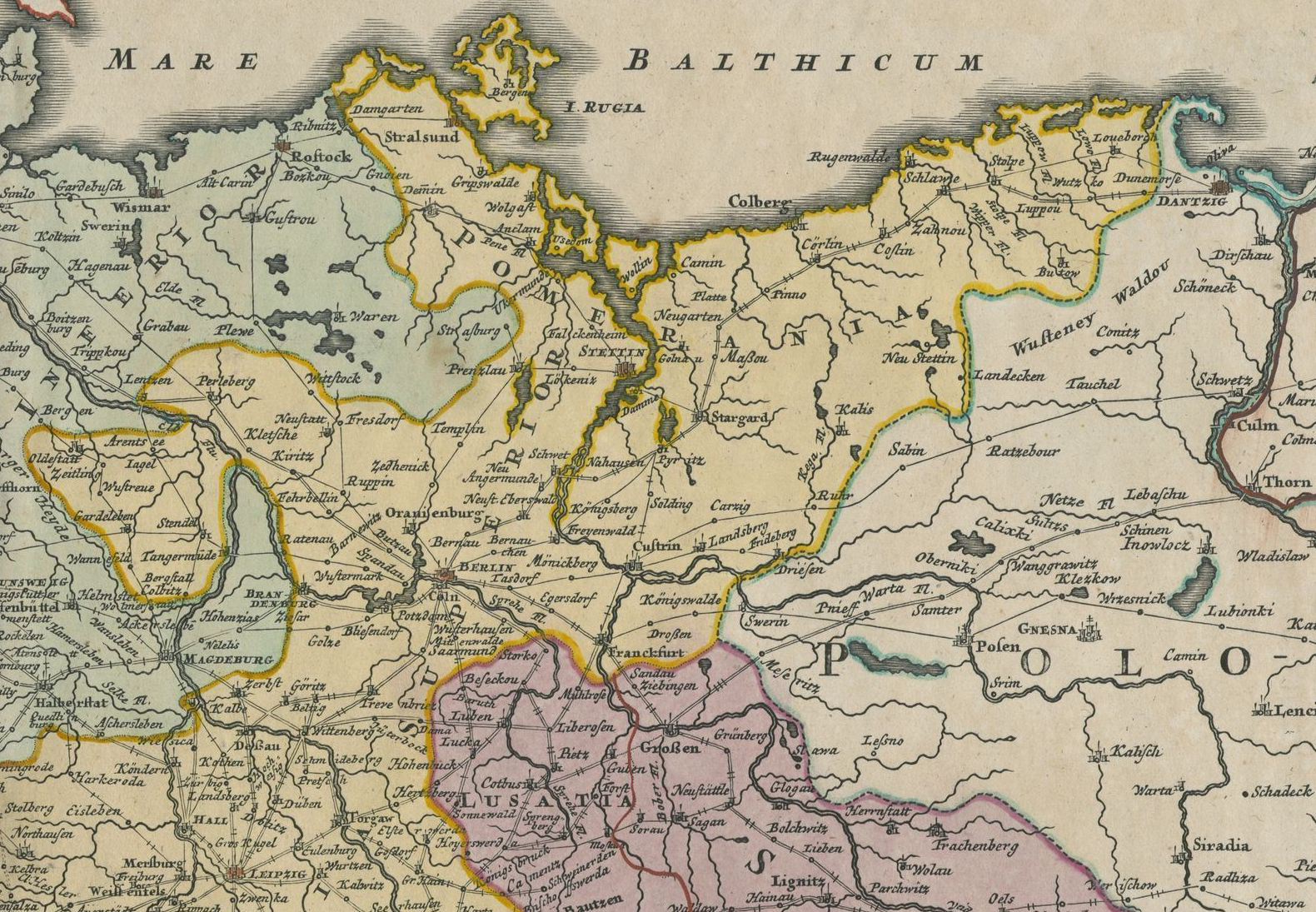
On the far right, you can see Danzig (Gdańsk) falling just within Polish-Lithuanian territory.
The Prussian History of Szczecin/Stettin
And so began the Prussian phase of Stettin's history. The Kingdom of Prussia, born from a union between the German states of Brandenburg and the Duchy of Prussia, surged into power in the 18th century and continued to consolidate its gains during the partitions of the Polish-Lithuanian Commonwealth. With the exception of Napoleon's occupation of Stettin between 1806 and 1813, the city was effectively Prussian-German until the end of WWI. Jews living in Pomerania were granted Prussian citizenship and, for the first time ever, were allowed to settle within the city walls in 1814 followed by the construction of a synagogue in 1834. By 1816, Stettin had a population of close to 26,000 inhabitants.
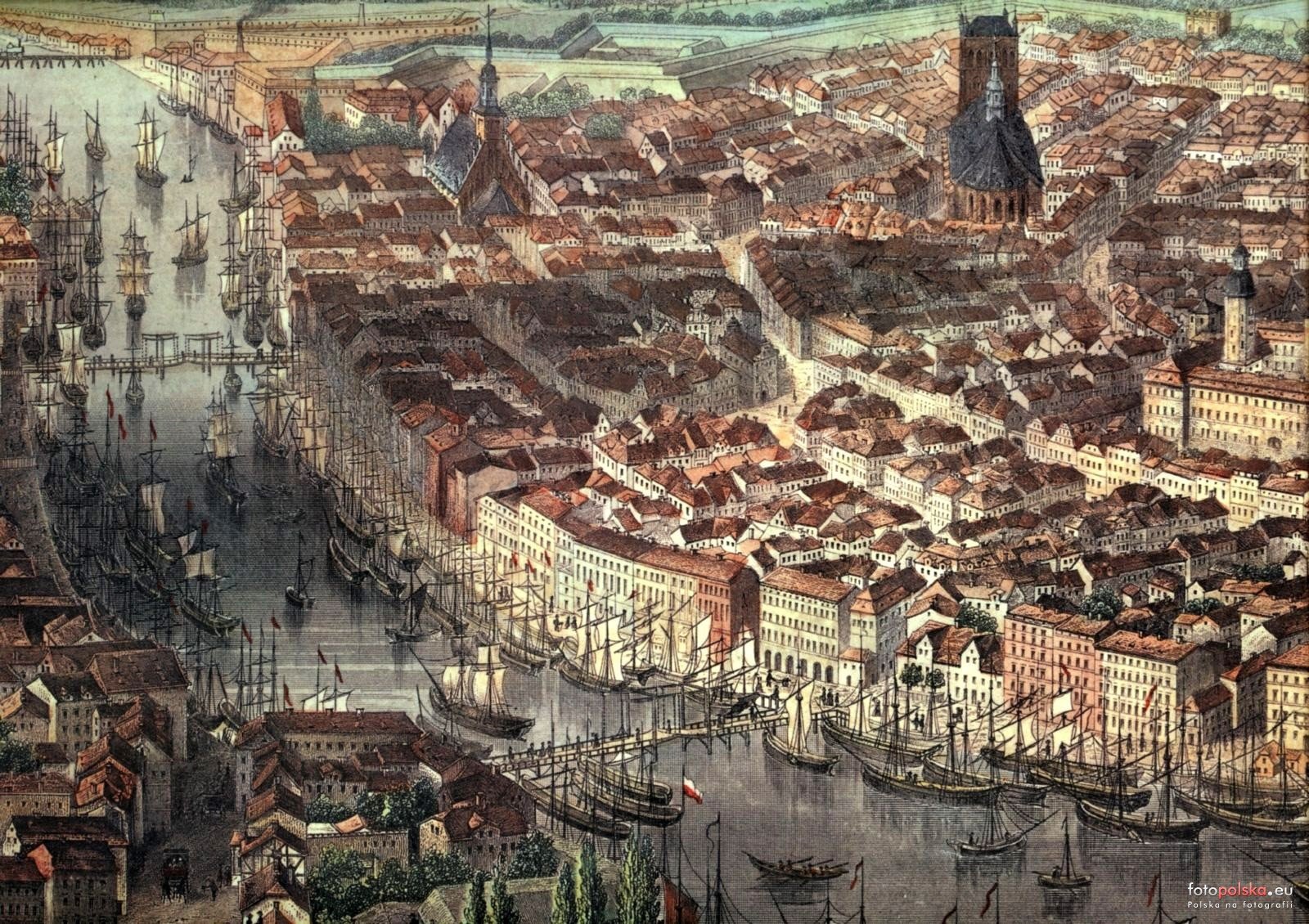
Szczecin (then Stettin), along with other 21st-century Polish cities like Bydgoszcz (then Bromberg), Poznań (then Posen) and Wrocław (then Breslau), experienced a huge amount of development and economic prosperity, particularly in the 19th century, thanks to Prussian investment. By the time of the Prussian-led unification of Germany in 1871, Stettin was the German Empire's major port on the Baltic. The huge focus placed on growing Stettin's port infrastructure resulted in the district of Łasztownia being overhauled, replacing run-down 18th-century buildings with newer ones in the Art Nouveau style.
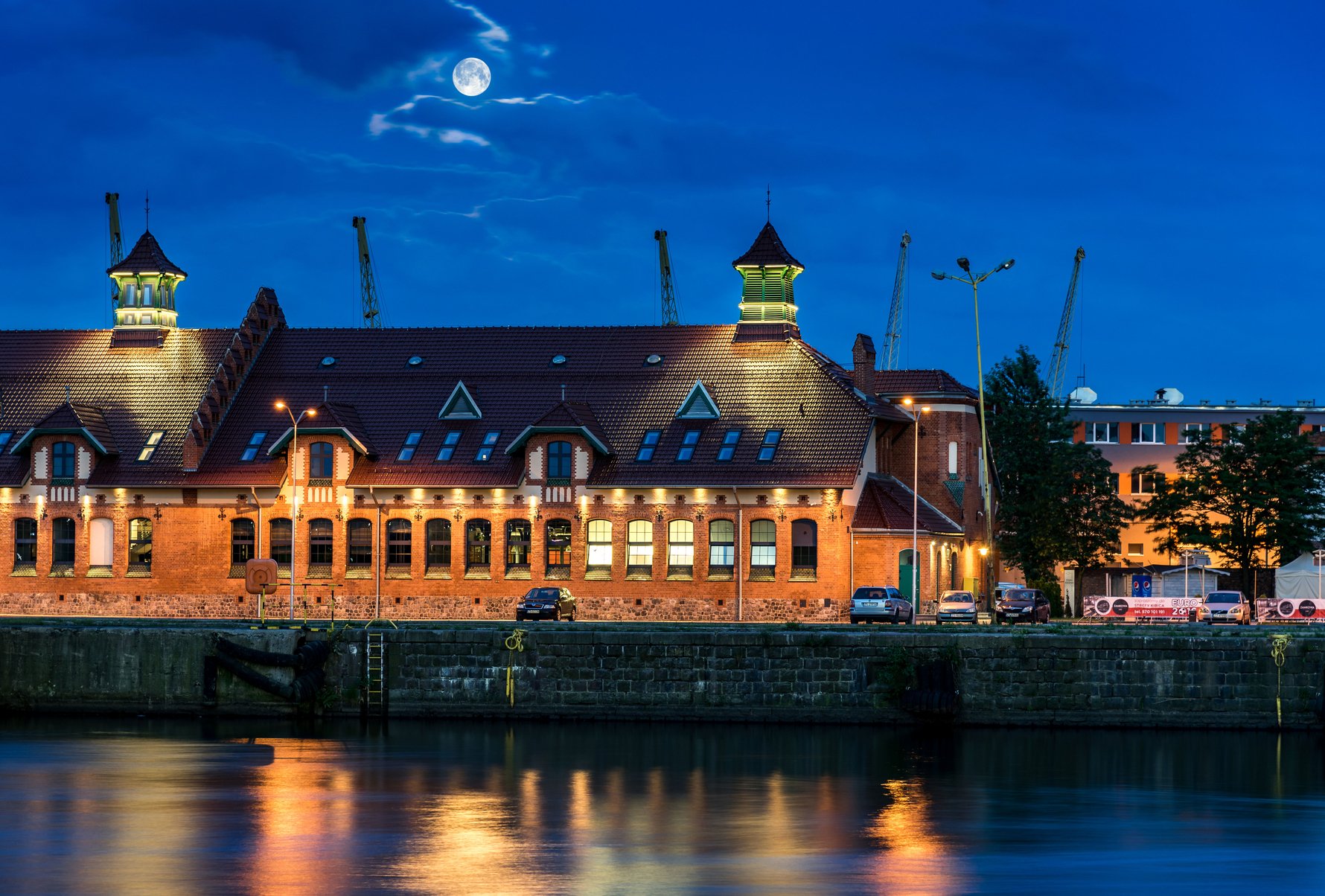
Connecting other major centres by railway was equally as important as Germany's seatrade, which is why the city finally got a railway service in 1843. As Europe became mad about tram technology, Prussia took advantage of public works opportunities in its newer eastern cities and began implementing tram networks. Stettin had its first horse-drawn tram in 1879 and, later, its first electric tram in 1896. By the turn of the century, Szczecin had 7 tram lines and this number would continue to grow.
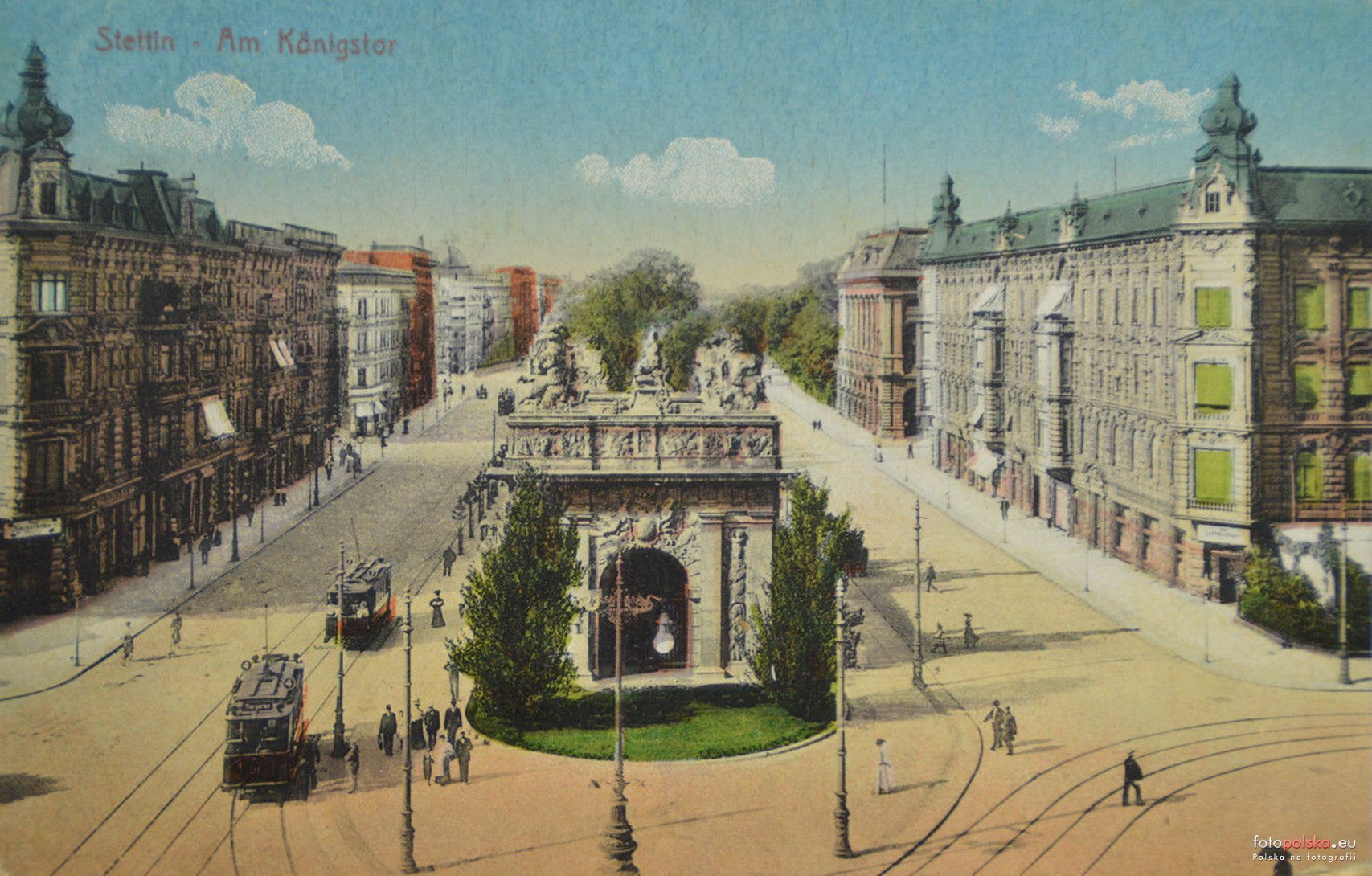
Other public works programs continued to change the landscape, most notably 'Szczecin Centrum', the district which was almost completely overhauled at the end of the 19th century. Georges-Eugène Haussmann, the French urban planner who 'modernised' the centre of Paris, was commissioned to redesign the area and, subsequently, both central Szczecin and Paris bear a striking resemblance. Ironically, these 'untouched' buildings are the oldest such structures standing in Szczecin today, as the medieval Old Town would be heavily damaged in WWII and almost entirely rebuilt in the 20th century.
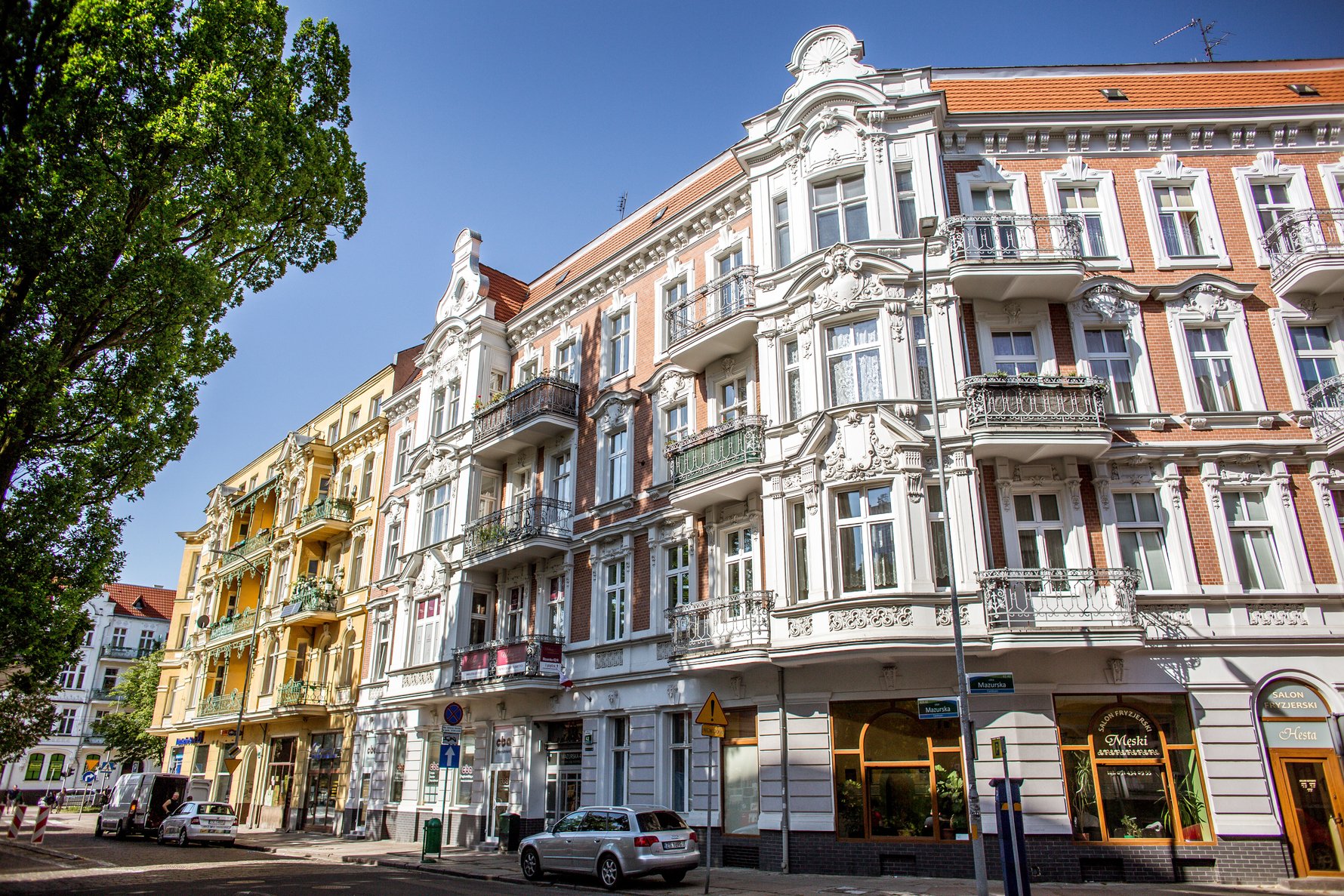
Stettin's wealth as a port and industrial centre, focused on ship building, grain and timber, allowed the city to splash out even further with more public works. On an old fort embankment on the westside of the Oder River, Hakenterrasse (now known as Wały Chrobrego) was constructed between 1902 and 1921 as a recreational observation deck. Nearby institutional buildings, such as the main National Museum building and the Szczecin Voivodeship Office, were built between 1908 and 1911. One of the world's first cinemas, Kino Pionier, opened in Stettin in 1907 and has continued to screen movies in its retro interior to this very day! By the start of WWI, Stettin's population had well-and-truly 250,000 inhabitants, though only 2% were Polish.
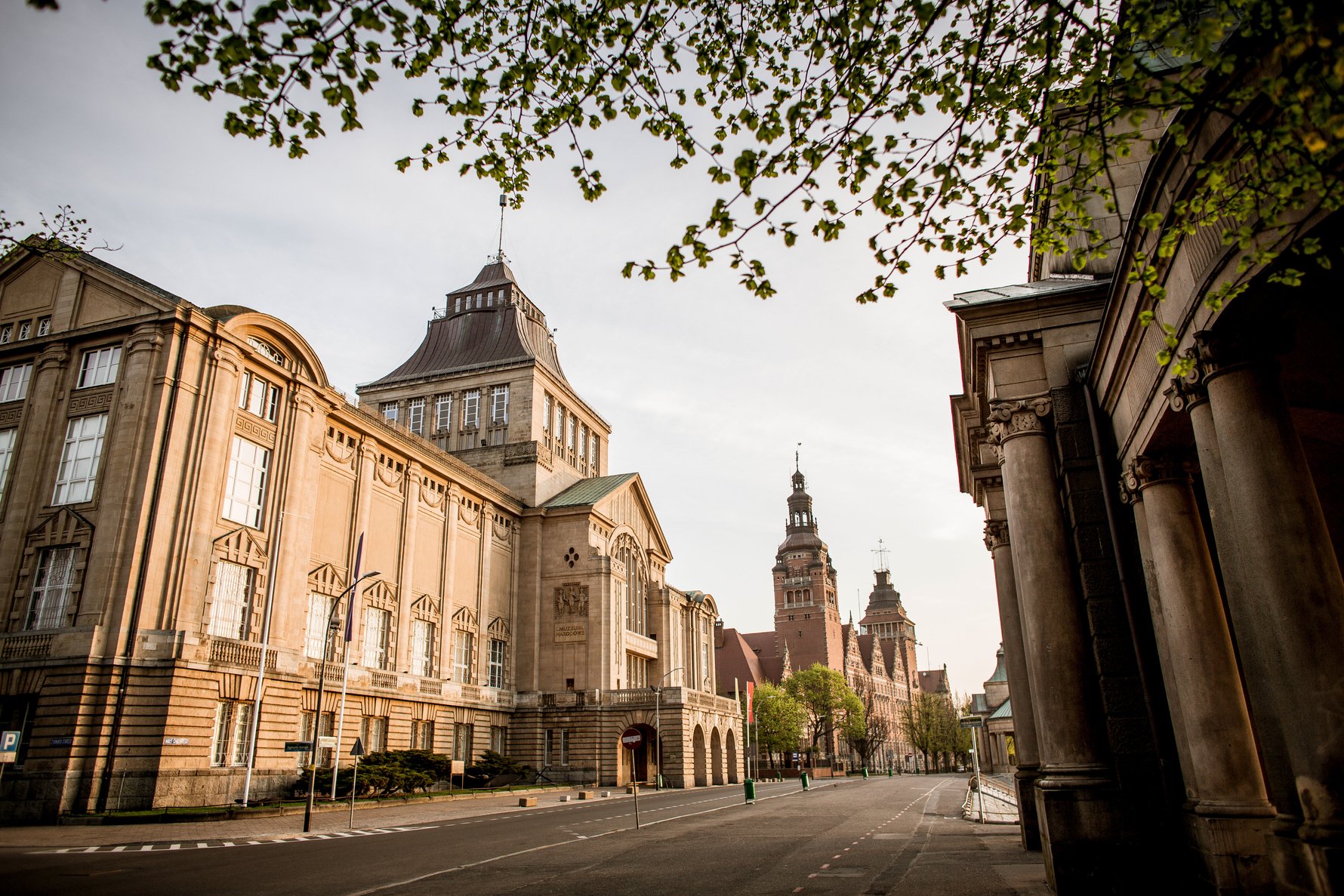
All of these buildings were constructed during Prussia's development of Szczecin/Stettin in the early 20th century.
Szczecin/Stettin in WWII
Europe was shaken up by the First World War and the German Empire effectively dissolved, leaving Prussia as a duchy of the interwar German Weimar Republic. Economically it took a hit as well, losing several major cities to the newly-formed Second Polish Republic. Stettin, however, remained German. The loss of territory and economic hardship experienced by Germany led to popular support for the Nazi party, who won by a significant margin in Stettin's local election in 1933. Infrastructure in the lead up to WWII was focused on weapons production, which was headed by local car manufacturer Stoewar, as well as the first of many German bunker networks that remain a popular tourist attraction in Szczecin to this day. Of the approx. 2,100 Jews that lived in Szczecin before the Nazis came to power, most were deported or annihilated. The city's synagogue was destroyed in 1941. Heavily bombed by both Allied and Soviet forces in 1944, an estimated 65% of the city was destroyed.
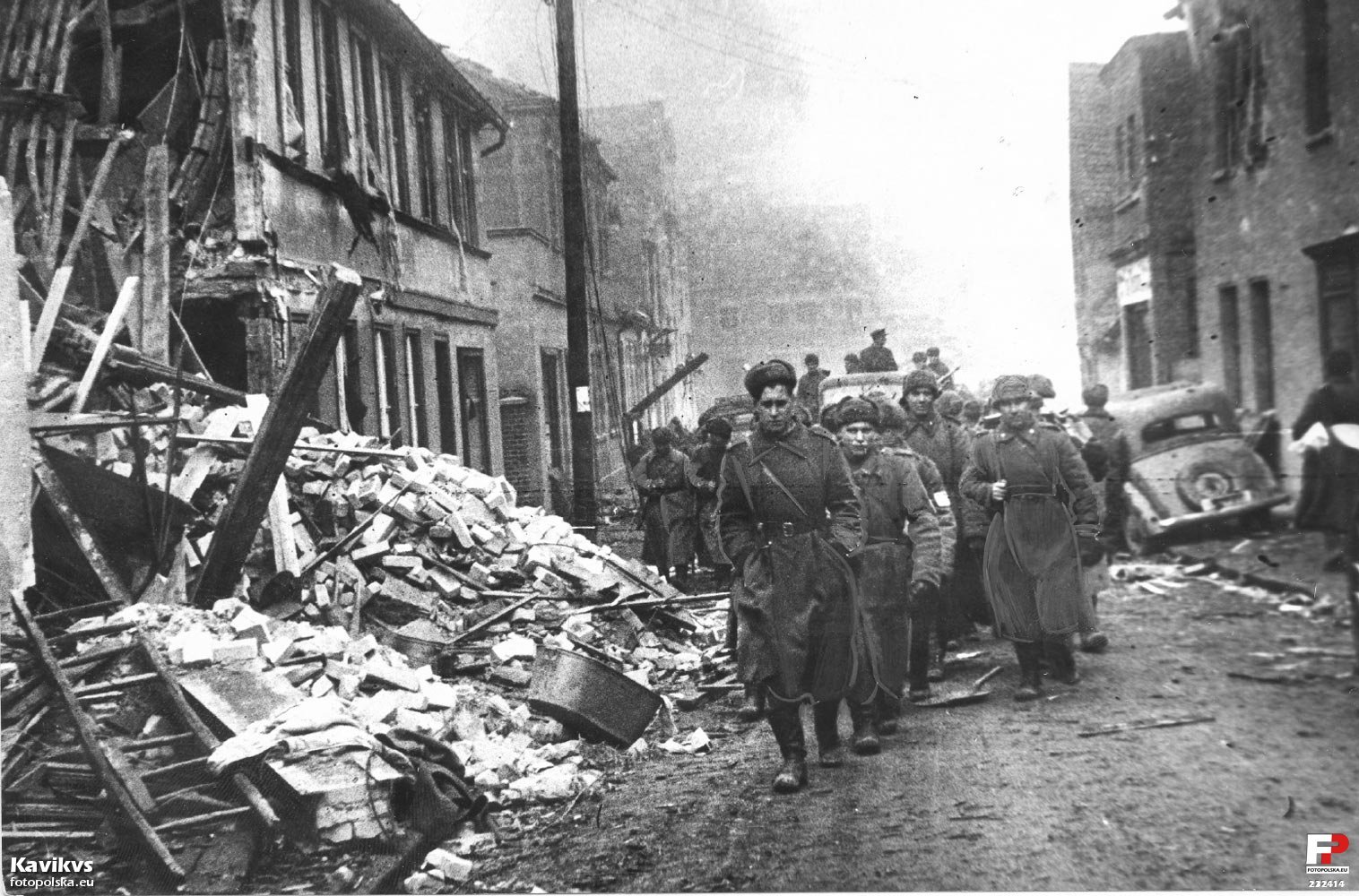
The pre-WWII population of Szczecin, numbering 382,000, had dropped to 180,000 by 1950, due in part to the expulsion of Germans from Polish territory. Over the next few decades, Polish authorities were adamant about removing 'all German traces' from the city. Street names and key landmarks were either translated into Polish or completely renamed. About 30% of Poles who moved to Szczecin after WWII were resettled from Poland's former eastern territories that had been taken over by the Soviet Union when the country's eastern border also moved west.
Stettin becomes Szczecin (again)
Finally, after more than a thousand years of 'mispronounciation', Stettin was officially renamed Szczecin as a city of the Polish People's Republic. However, the renaming and re-polonization of the city was a bitter-sweet affair. Not only did locals have to rebuild a huge chunk of their war-ravaged historic centre, but Soviet Russia, who had helped pave the way for Polish Independence, made sure that the new country fell into the right hands... politically-speaking. The Polish People's Republic, abbreviated in Polish as PRL, was the second-most-populous communist and Eastern Bloc country in Europe.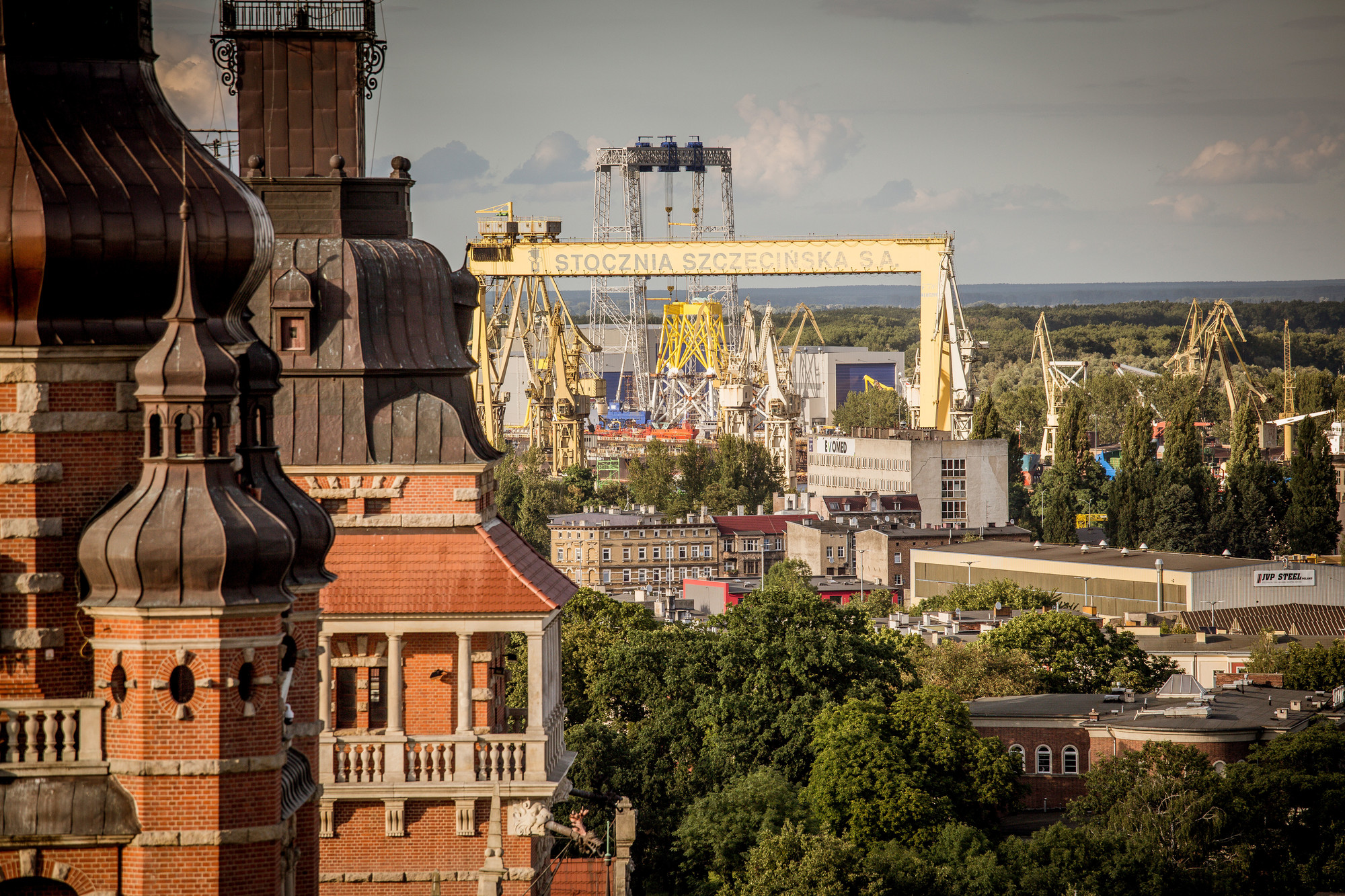
Szczecin during Solidarity
Aside from pasztecik and the cultural contributions of Teatr Polski, one of the most significant developments in the city's communist period was the construction of the Szczecin Shipyard, which would rival the one up in Gdańsk. It was here in the 1970s and 1980s that pro-democratic resistance amongst shipyard workers would surface in reaction to the economic strains imposed by the communist system. Mirroring similar activities that were taking place in Gdańsk, Szczecin would actually sign its 'agreement' one day earlier than the more famous August Accords. The resulting Solidarity movement that was born in Szczecin and Gdańsk was the beginning of democratic change in Poland and the Eastern Bloc, the domino effect of which would eventually result in the dissolution of Soviet Russia in 1991. Szczecin's contributions to the Solidarity movement are covered in-depth in its architecturally-impressive cultural institution Dialogue Center "Upheavals".

Szczecin in the 21st Century
With its complex history well-and-truly behind it, Szczecin has continued to develop in the 21st century, enjoying European Union funding that has contributed to its growing industries, high living standards and popularity with students as a place to study. The hallowed ground of Szczecin is now a popular destination for tourists from nearby Germany, Denmark and Sweden - three countries that once sought its conquest. The city's maritime history in celebrated in annual events such as the Sail Szczecin Festival. Its waterfront location allows it to enjoy a plethora of recreational and cultural activities, and the industrial sea trade district of Łasztownia now comes to life as a nightlife destination and summertime hangout. Szczecin's Philharmonic opened its award-winning new home in 2015, which lights up during the evening, and the courtyard of the picturesque Ducal Castle also frequently hosts concerts and other events. All told, the city's star is on the rise, and there's never been a better time to visit. Go exploring!Read our article: Where is Szczecin and how to get there?
Read our article: Szczecin: German Bunkers and Old Town Sightseeing
Read our article: Top 10 Outdoor Activities in Szczecin
Read our article: What is Szczecin famous for?
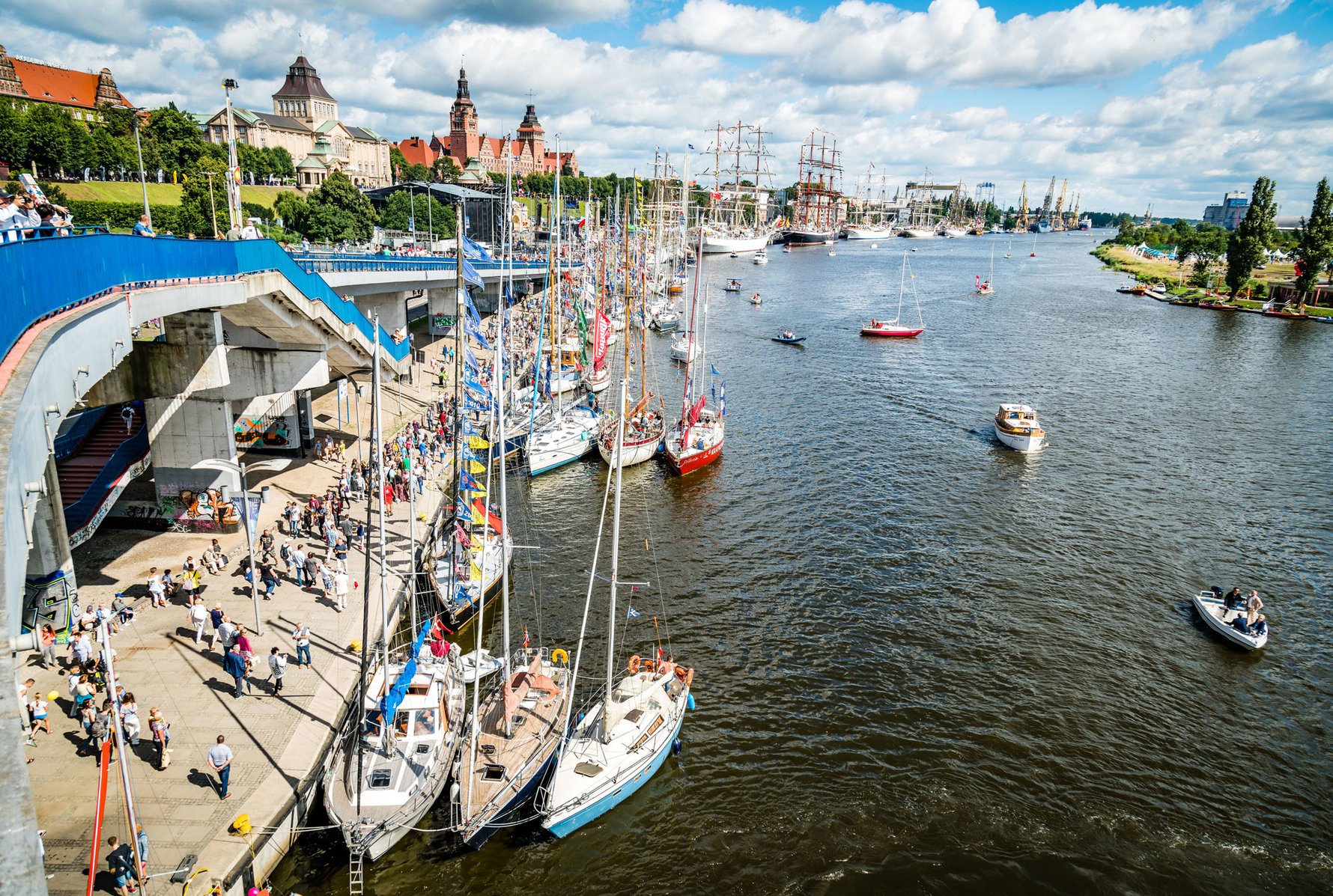


Comments